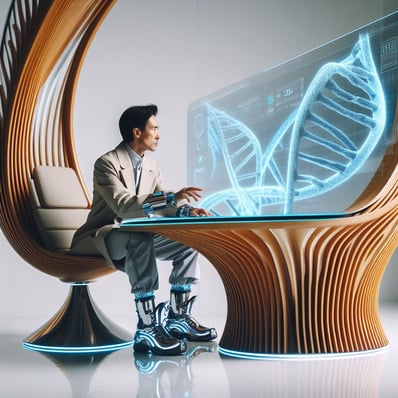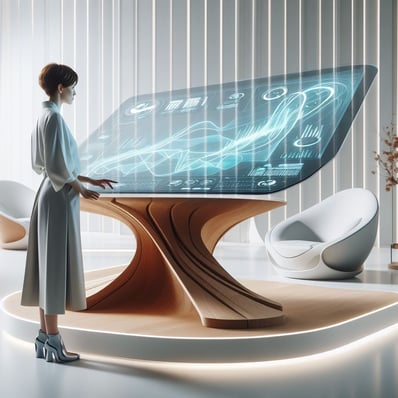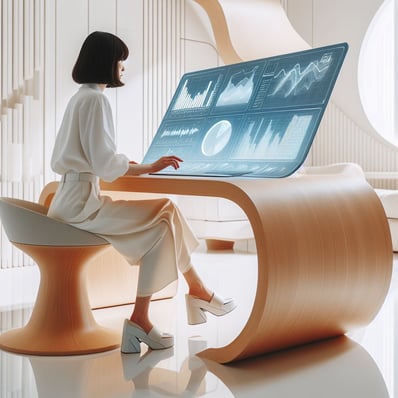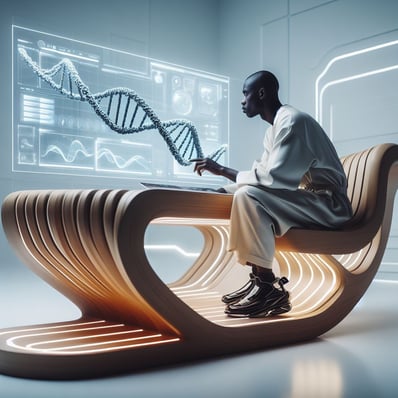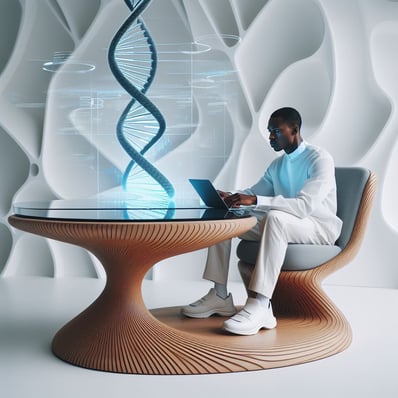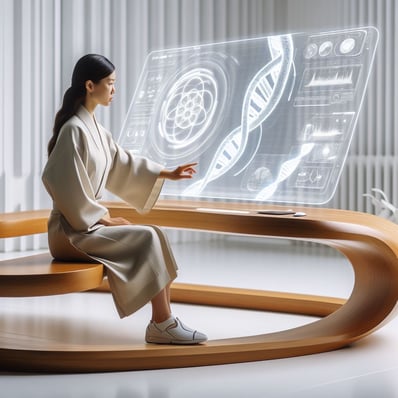Embracing Tomorrow's Workspace
Creating a symbiotic symphony of imagination and sustainability.
Walid Ghali
12/17/20232 min read
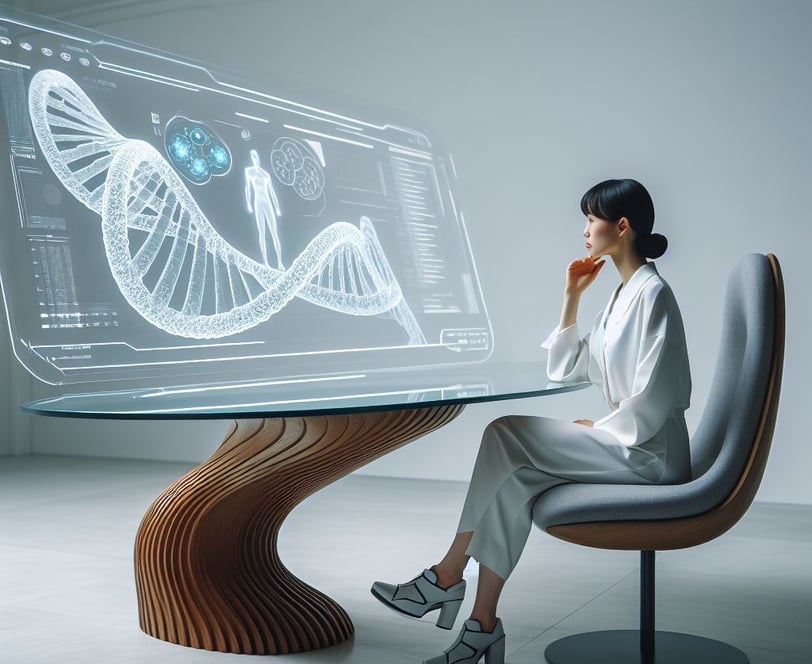

As I explore into the realm of image generation with AI, a powerful enabler of imagination, I find myself painting a vivid picture of the future workspace. It's not merely a physical setting but a reflection of our values and aspirations. Here's my vision:
Our journey into designing and shaping our workspace is, at its core, an investment in living a symbiotic life with our environment. The materials we choose—be it the warmth of wood, the transparency of glass, or the innovative use of materials like plastic or bio-based substances—should reflect a commitment to long-lasting assets, not fleeting liabilities.
In this envisioned workspace, our attire is a nod to tradition, drawing inspiration from the past while embracing the principles of minimalism and luxury. Every piece of clothing tells a story of craftsmanship and purpose, echoing our respect for heritage while embracing the elegance of simplicity.
But perhaps, the true hallmark of tomorrow's workspace lies in our dedication to sustainability. Recycling is not just a buzzword; it's a serious commitment woven into the fabric of our daily operations. From the furniture we sit on to the devices we use, everything is designed with a circular economy in mind, ensuring that our footprint on the planet is one of responsibility and renewal.
Working in an office, in this vision, is not merely a routine—it's a symbol of prestige. However, this prestige is not rooted in a feudal mentality but is a celebration of our collective human achievement in evolution. It's a place where creativity and innovation flourish, where collaboration and diversity are not just encouraged but integral to our success. Let's see some points:
Holistic Design Integration: In the evolving workspace, design isn't just about aesthetics; it's about functionality and well-being. Holistic design integration considers not only the visual appeal but also the ergonomic aspects, fostering a workspace that enhances productivity and supports the health of its occupants.
Biophilic Elements: Bringing nature indoors with biophilic design elements transforms the workspace into a thriving ecosystem. Incorporating greenery, natural light, and sustainable materials fosters a connection with the environment, promoting well-being and creativity among employees.
Flexible and Remote Work Options: The workspace of tomorrow acknowledges the changing dynamics of work. Embracing flexibility and remote work options not only caters to the evolving needs of employees but also contributes to a more sustainable work environment by reducing commuting and office space requirements.
Smart Energy Management: Integrating smart energy solutions ensures efficient use of resources. Automated lighting, heating, and cooling systems, coupled with energy-efficient appliances, contribute to a sustainable workspace that minimizes environmental impact while optimizing energy consumption.
Digital Collaboration Platforms: Advancements in AI-powered collaboration tools reshape the way teams work together. Seamless digital collaboration platforms foster creativity, streamline communication, and reduce the need for excessive physical meetings, contributing to a more efficient and sustainable workflow.
Community-Centric Spaces: Tomorrow's workspace isn't just a place to work; it's a community hub. Creating spaces that encourage collaboration, idea-sharing, and networking fosters a sense of belonging and innovation, ultimately contributing to a vibrant and sustainable work culture.
As we step into the future, let us not merely occupy spaces but create environments that inspire, nurture, and stand as a testament to our commitment to a harmonious coexistence with both nature and progress. Tomorrow's workspace is not just a physical destination; it's a canvas where imagination meets sustainability, and our human journey continues to unfold in ways that elevate us all.
